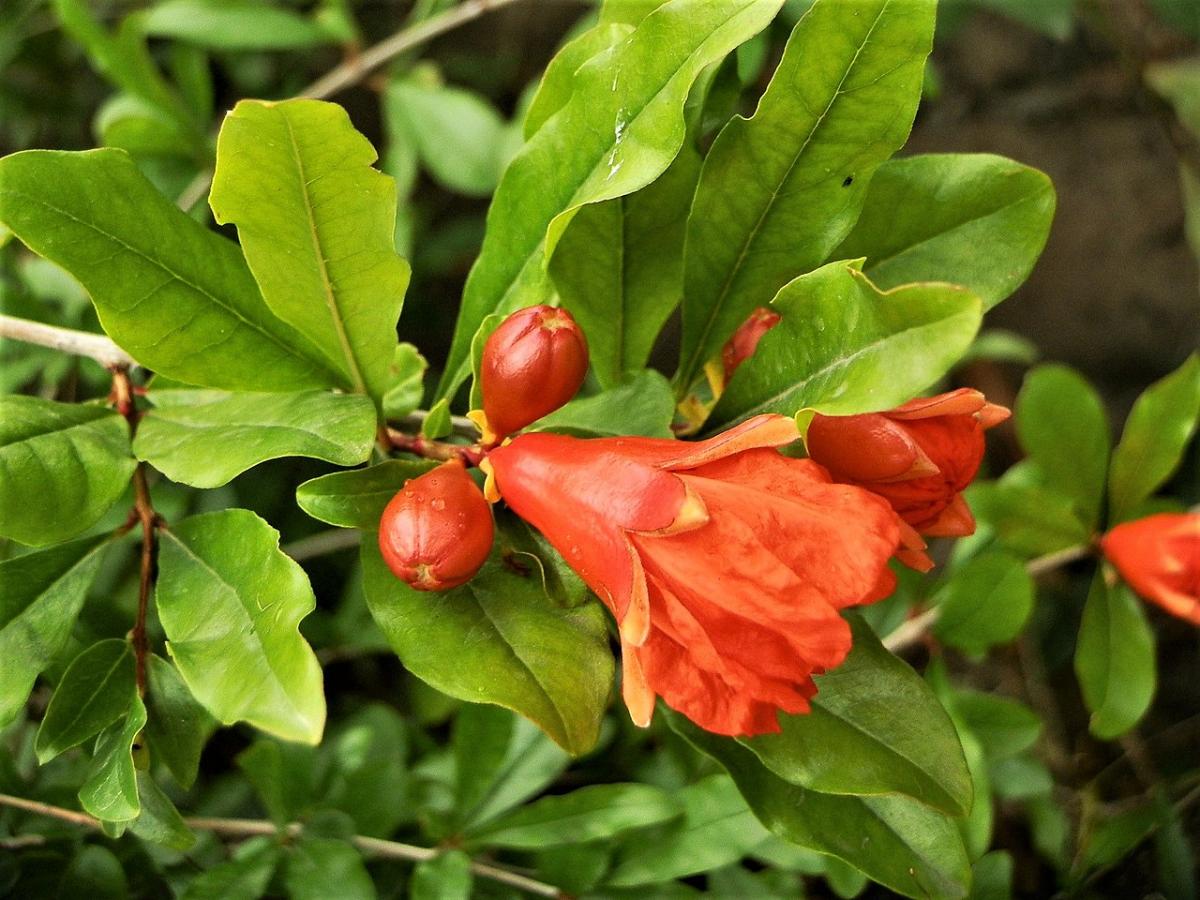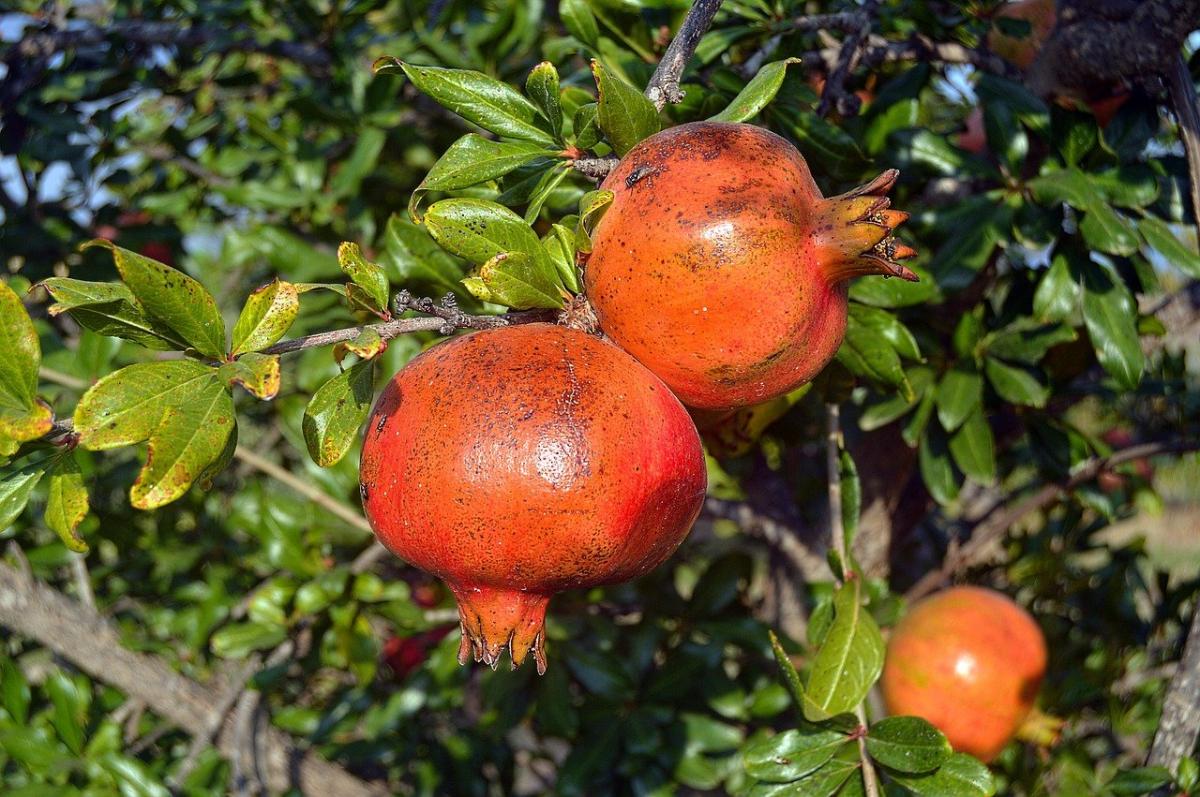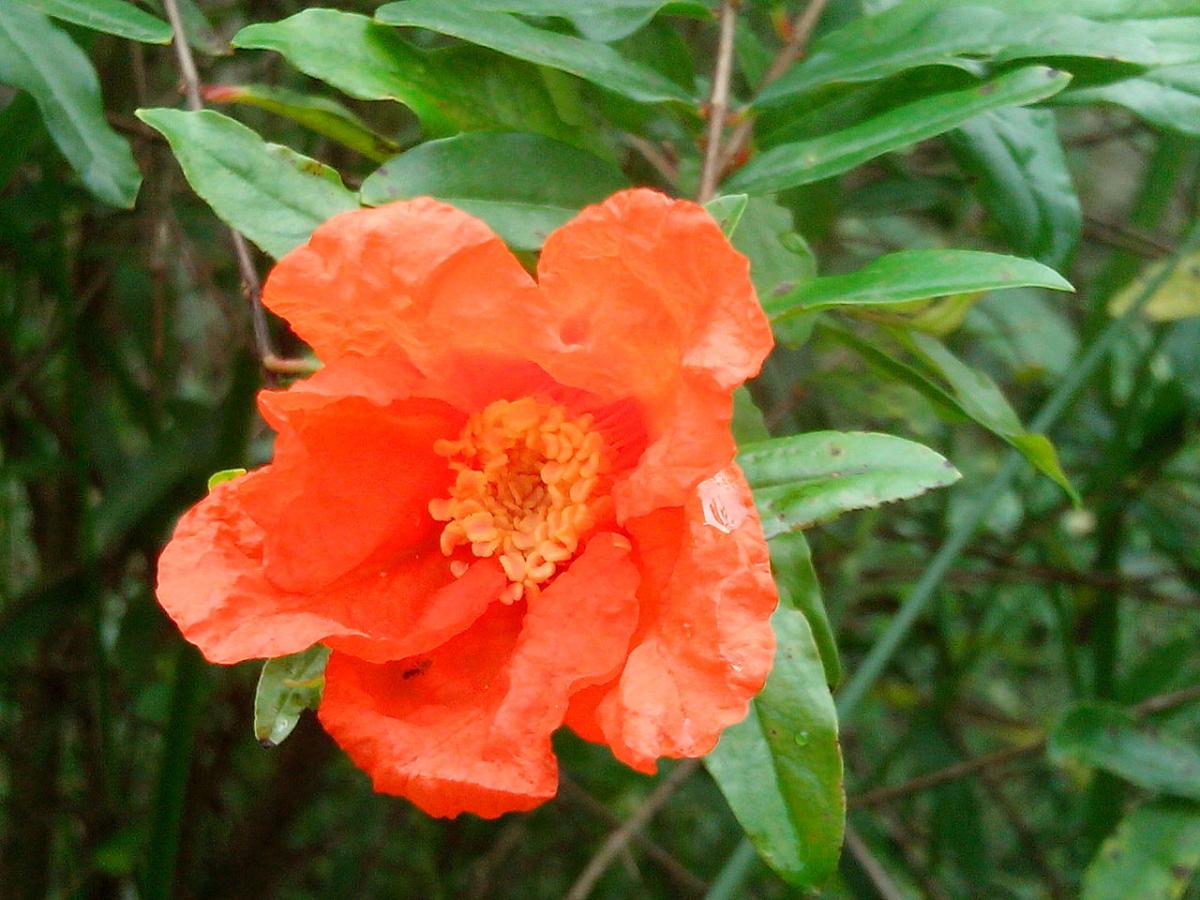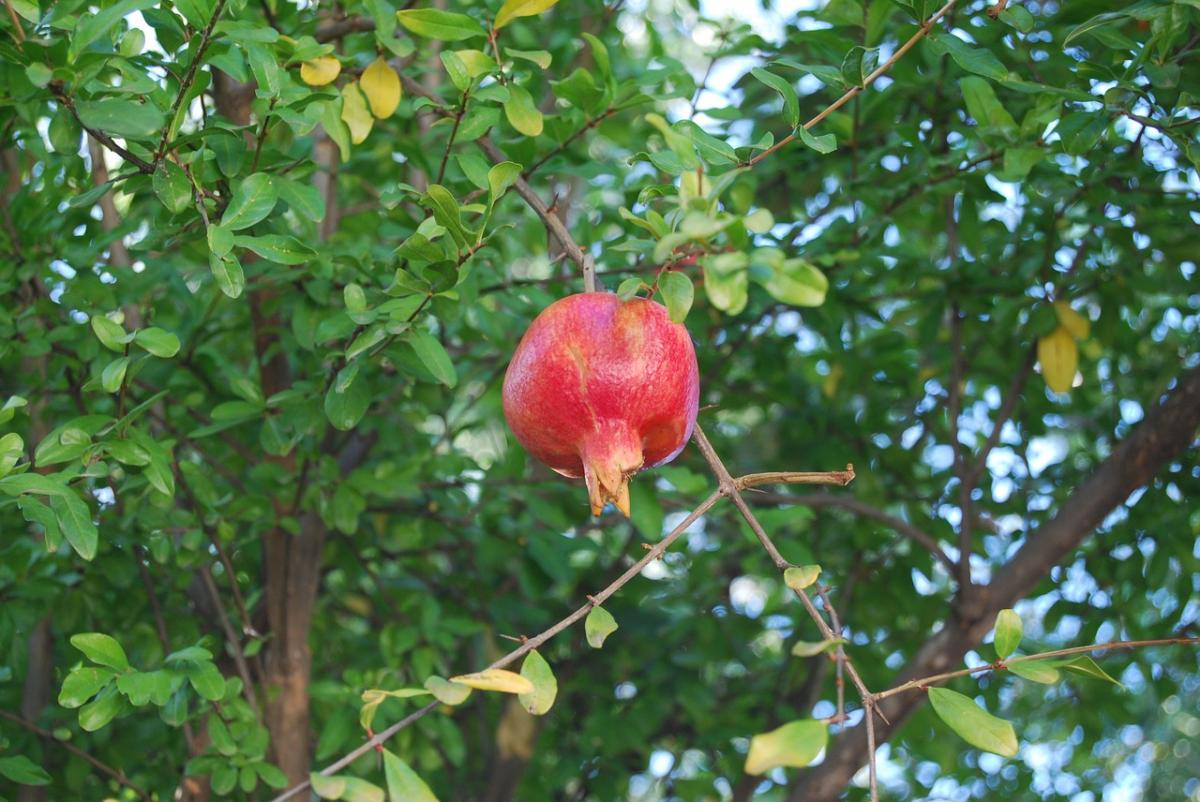
Image - Wikimedia / Beko
The pomegranate is a very resistant and adaptable fruit tree whose growth rate is reasonably fast. It can be grown in any type of garden, whether small, medium or large, as its roots are not invasive at all. In addition, its beautiful flowers will decorate the place every spring.
But what to do if those flowers never seem to bloom? If you are wondering why my pomegranate does not bloom, below you will know the possible causes and how to solve them.
Basic characteristics of pomegranate

El pomegranate It is a spiny, deciduous tree or shrub that can reach a height of 5-6 meters. Its trunk branches almost from the base, although it can be pruned to leave it without branches up to a certain height, and have it more like a tree. It can even be worked as bonsai (especially the dwarf variety, whose scientific name is Punica granatum var. lullaby).
The leaves are simple and lanceolate, measuring between 1,5-7 centimeters long and 0,8-2 centimeters wide, and are glossy green in color. Its flowers bloom during the spring, and are between 3 and 4 centimeters in diameter. The fruit is what we know as a pomegranate, and it has a spherical shape, reddish in color and measures between 5 and 12 centimeters. Inside there are several seeds of about 12-15 by 5-7mm.
In what conditions does it live?
It is a plant native to Iran and Turkey, but it has become naturalized in the Mediterranean region. It is grown without problems in places where the climate is tropical, subtropical and temperate, since it supports temperatures of up to 40ºC and -12ºC.
It favors heat, and resists drought. The pomegranate is also an ornamental shrub, which can be planted in poor soils. As long as it is in direct sunlight and has a little space available to grow, it will be fine.
Why is it not blooming?

Image - Wikimedia / Tulsi Bhagat
There are several reasons why a pomegranate may not bloom. Before we do anything, we have to identify it.
Lack of direct light
The pomegranate, whose scientific name is Punica granatumIt is a tree that, in order to grow well and flourish, needs to be directly exposed to the sun. If it is in semi-shade, inside the house / greenhouse, or protected in some way, it will not be able to produce flowers because it lacks energy.
Being a heliophilic plant, the ideal is that it begins to receive the impact of the rays of the star king from when it is a seedling, or if it is a cutting, from the moment it has rooted. In this way, it will have a correct development, flourishing with health and producing fruits.
What to do?
Put it in a brighter area. The sooner the better. Of course, if you have never had the sun before, you will have to acclimatize little by little so that your leaves do not suffer burns. To do this, you must first get used to receiving 1-2 hours of direct light a day. Afterwards, you can increase the exposure time little by little.
Is young
Age is a factor that must be taken into account. The dwarf pomegranate (Punica granatum var. lullaby) is a tree that blooms early, with 1-2 years of age; instead the normal variety (Punica granatum) it takes about 5 or 6 years if you get water regularly. When a plant produces flowers for the first time, we can generally assume that it is ready to produce its own fruits and thus contribute to the creation of new generations.
But to get to that moment it is important that they finish their youth first, since to produce flowers, fruits and seeds a lot of energy is needed. An energy that, when the pomegranate is young, it uses to grow.
What to do?
Provide you with the care you need: direct sun, regular waterings throughout the year, and make some contributions of organic fertilizer in spring and summer.
Lacks space
If we have a pomegranate in the same pot for a long time, there will come a time when it will not be able to continue growing. Although I am in the age of blossoming, if its roots do not have room to grow, the plant will not be able to produce flowers.
This can also happen if you grow in the garden, but have paved soil a few inches from the trunk. The roots require space to develop, as well as air, water and nutrients.
What to do?
If it is potted, It should be planted in another that measures about 7-10 centimeters in diameter and deeper than the one you have now. Likewise, that container must have holes at the bottom, since pomegranate is a plant that does not resist waterlogging. In addition, you do not have to put a plate or tray under it, as the water would remain stagnant and the roots would rot.
If it is planted in the garden, remove some of the paved soil. Theirs would be to leave dirt from the trunk to a distance of about 40 centimeters at least.
It is recovering from a drastic pruning
The pomegranate can be pruned, but in moderation. If it is for example 3 meters high, we do not have to leave it with 1 meter in one go because most likely we would lose it. And is that when pruned a lot, the plant will consume energy trying to recover, that is, to heal the wounds and move on, not to flourish.
But, if it is the case that before these wounds are sealed, some microorganism enters (fungus, bacteria, virus) the recovery time will be longer. This is rare for pomegranates, but cannot be ruled out.
What to do?
In these conditions, your pomegranate needs water from time to time to keep it hydrated. Also it is advisable to treat it with a multipurpose fungicideSince if it has fungi, you can keep them at bay. You can buy it here.

With these tips, your pomegranate will blossom sooner rather than later.
My pomegranate blooms, bears fruit, but they all open up before their time. Why?
Hello Constance.
From what you count, it could be that you are giving it uneven watering. In order for the fruits to ripen, from spring to late summer it must be watered regularly with the same amount of water. Although it resists drought, it is advisable to water it 3-4 times a week, especially during the warmer months.
A greeting.
Hello. I have a dwarf pomegranate. Is the fruit that produces a pomegranate or does it only bear flowers?
I have never seen your flower.
Hello M. Paz.
In order for it to bear fruit, it must first have flowered; that is, there can be no fruit without a flower 🙂
If you want, the next time it bears fruit, you can send us some photos to Contact@jardineriaon.com
regards
Good!
I have a pomegranate transplanted from this year's nursery in February/March. I live in Madrid, I have it in a flowerpot with lavender on a rooftop, but it still hasn't put out any leaves as of May 6, although it does seem that there are budding buds. Is it normal for it to be so late? I just moved it to a west location, it gets sun from 14pm to dusk. Before, it was in an eastern location, but it received less direct sun, and it was less easily irrigated with rainwater. Now, in a few days after it has stopped raining, I am going to put an automatic watering system on it. What else can I do to make it sprout?
Hi Esther.
I recommend you separate both plants, and have them each in a pot. Since the two are now in the same one, they compete for space and nutrients, and that affects growth.
The pomegranate tree is very sensitive to excess water. He doesn't tolerate it. It is better to water manually, with a watering can, about twice a week in summer, and less the rest of the year.
Regards!